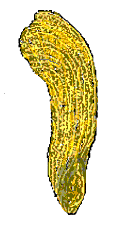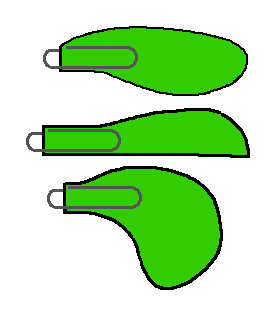"Maple
Seed" Helicopters
SUBJECT: Aeronautics
TOPIC: Helicopters
DESCRIPTION: Autorotating helicopters, based on the shape of maple
seeds, are made from paper.
CONTRIBUTED BY: Gregory Vogt, OSU
EDITED BY: Roger Storm, NASA Glenn Research Center
 MATERIALS:
MATERIALS:
Paper (stiffer paper works better)
Scissors
Paper clips
PROCEDURE:
1.Make copies of the maple seed pattern and derivatives on blank paper. Cut
out each pattern.
2.Attach a paper clip to each design and slightly warp (curl) the paper to
produce an airfoil shape.
3.Drop each "maple seed" from a height of at least 5 feet and watch its fall.
4.If the design fails to autorotate, adjust the position of the paper clip
slightly. Keep adjusting the clip until the "maple seed" begins autorotating
as it falls.
5.Experiment with different designs of your own making.

DISCUSSION:
Maple seeds are superb autorotating helicopters. They begin rotating almost
from the moment they are released from the tree. Even seeds that are poorly
shaped or have badly damaged blades (wings) rotate with "ease."
Autorotation takes place
because of the asymmetrical nature of maple seeds (and of paper copies). The
center of mass of the seed is shifted well to one end while its center of
lift is approximately in the middle. In a complicated process, the forces
at work as the seed falls combine to begin a circular rotation of the seed
about its center of mass. The rotation actually inscribes a cone around the
axis of fall. The shape of the cone will vary depending upon the aerodynamic
qualities of the seed's blade (wing). A blade with minimal lift properties
will inscribe a steep-side cone while a blade with strong lift properties
will inscribe a very flattened cone.
ORIGAMI MAPLE SEED
GO TO THE HELICOPTER ACTIVITY PAGE
Return to Aeronautics Activities
Return to Aerospace Activities Page
Objects that Lift
Aerospace Education Services Project
Oklahoma State University
